Procter Hall
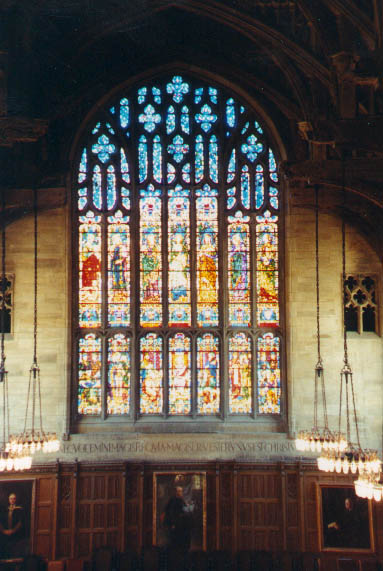
Probably the most admired part of Ralph Adams Cram's design for the Graduate College is Procter Hall, a grand dining hall clearly reminiscent of a medieval refectory. Upon entry into the hall, which seats 250, the awe-inspiring Seven Liberal Arts Window designed by William and Annie Lee Willet of Philadelphia takes center stage; it is best viewed between 2:30 and 4:30 p.m., depending on the time of year. The center row of images depicts the Liberal Arts, a designation that goes back to antiquity and forms the basis of the traditional medieval secular canon of learning. In today's terminology, "art" in this sense is more closely akin to a field of study. The quadrivium was concerned with study of the physical world: arithmetic, astronomy, geometry, and music (i.e. the mathematical theory of music). The trivium encompassed grammar, rhetoric, and logic (or dialectic). All liberal arts were subservient to philosophy, the supreme art. The Willets' design shows grammar, logic, and rhetoric in the center, flanked by arithmetic and geometry on the left, astronomy and music on the right.
|
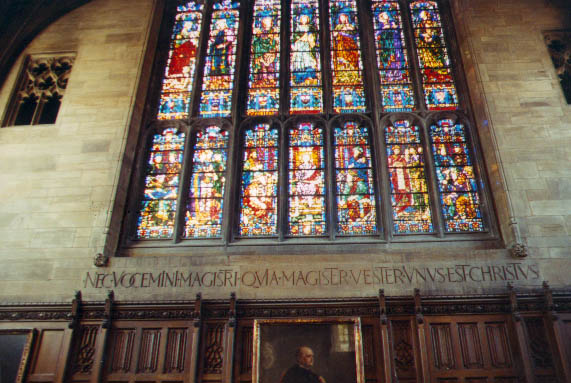
The bottom row of windows depicts "Christ, Teaching in the Temple" a choice that clearly indicates Dean West's Christian commitment and points to the pedigree of Western universities and colleges which, after all, emerged from monastic traditions. The motto West chose for the inscription underneath the great window makes this even more explicit: NEC VOCEMINI MAGISTRI QUIA MAGISTER VESTER UNUS EST CHRISTUS, or "And be ye not called master, for one is your master, even Christ." The window as a whole, then, shows the relation of the Christian tradition to the liberal arts, as Dean West envisioned it, a vision that is articulated with great rhetorical flourish by the artists in a 1918 pamphlet.
~ * ~ The portraits in Procter Hall are primarily of former deans of the Graduate School, a few masters, and benefactors; on the front wall behind the High Table, from left to right, hang portraits of Howard Crosby Butler, the first college master, Dean Andrew West, and President Grover Cleveland.
|
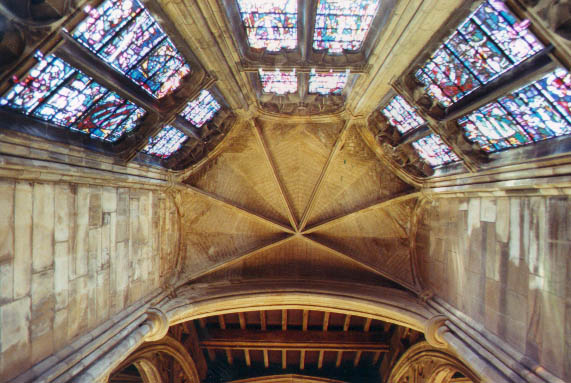
A view toward the vaulted ceiling in the oriel embellished with a Holy Grail stained glass window depicting scenes from Malory's Morte d' Arthur; it was designed by Charles Connick, one of Cram's favorite artisans.
|
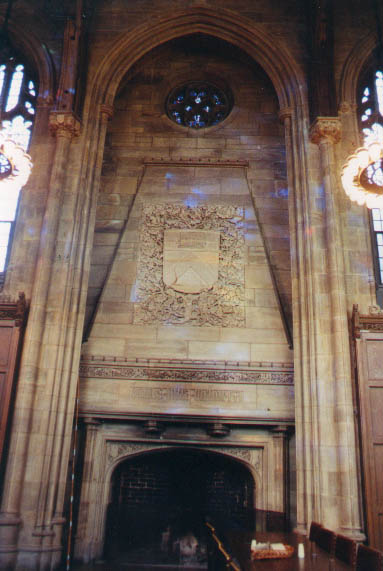
Opposite the oriel window is a massive fire place adorned with a relief showing the Princeton University shield superimposed on an oak tree. Among the leaves of the oak, the squirrels and birds at play are easily detected; the tiger hidden in the foliage requires closer observation. The inscription on the mantle is an exhortation to all who live and study at the Graduate College. It reads: "bonus intra, melior exi" - Enter Good, Leave Better.
|
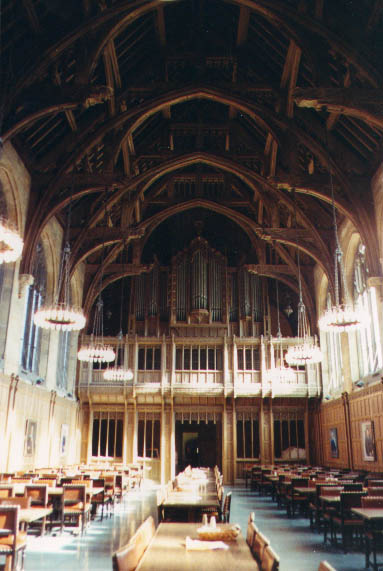
Turning back toward the entrance, the visitor sees the intricately carved organ gallery. At the dedication of the Graduate College, the organ gallery was empty. But a few years later, the story goes, Dean West invited Cleveland industrialist Henry Clay Frick to dinner who commented: "This place looks like a church. All you need in that gallery is an organ." In short order, Frick proceeded to supply funds for an organ. A four manual Aeolian Organ was installed in 1916 and an endowment provided for its maintenance and concerts. Among the recitalists during the first decade were several famous organists, including J. Frederick Wolle (1863-1933), founder of the Bethlehem Bach Choir, and Marcel Dupré (1886-1971), organist of St. Sulpice in Paris. In 1963, the Aeolian was replaced with a neo-baroque organ while retaining the original case.
|
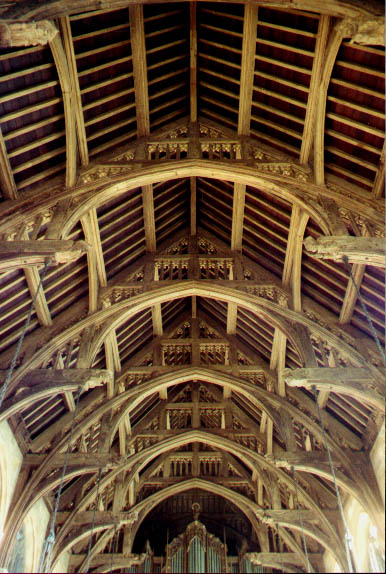
Next to the great window, the hammerhead beam construction of the ceiling is Procter Hall's most arresting feature. Tradition among generations of graduate students holds that the carved bosses on the hammerhead beams are humorous depictions of the trustees in Dean West's time. Each figure, wearing a mortarboard, holds an object in his hands that presumably symbolizes the primary source of his wealth: a railway car for Robert W. Garret, a laboratory beaker for Procter ... but there is no written evidence to support this interpretation.
|





